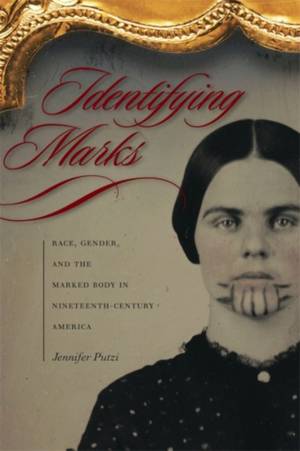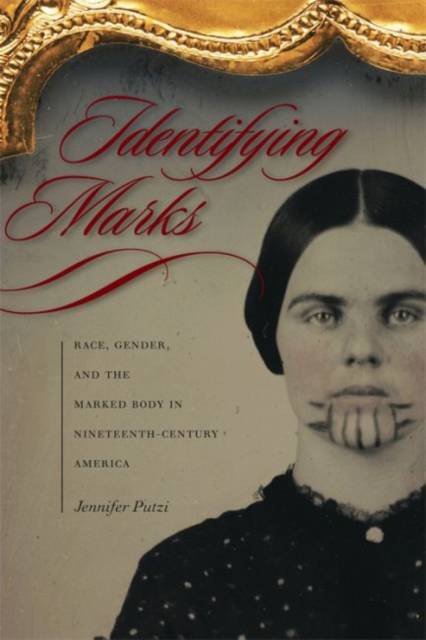
En raison d'une grêve chez bpost, votre commande pourrait être retardée. Vous avez besoin d’un livre rapidement ? Nos magasins vous accueillent à bras ouverts !
- Retrait gratuit dans votre magasin Club
- 7.000.000 titres dans notre catalogue
- Payer en toute sécurité
- Toujours un magasin près de chez vous
En raison de la grêve chez bpost, votre commande pourrait être retardée. Vous avez besoin d’un livre rapidement ? Nos magasins vous accueillent à bras ouverts !
- Retrait gratuit dans votre magasin Club
- 7.000.0000 titres dans notre catalogue
- Payer en toute sécurité
- Toujours un magasin près de chez vous
Identifying Marks
Race, Gender, and the Marked Body in Nineteenth-Century America
Jennifer Putzi
Livre broché | Anglais
47,45 €
+ 94 points
Description
What we know of the marked body in nineteenth-century American literature and culture often begins with The Scarlet Letter's Hester Prynne and ends with Moby Dick's Queequeg. This study looks at the presence of marked men and women in a more challenging array of canonical and lesser-known works, including exploration narratives, romances, and frontier novels. Jennifer Putzi shows how tattoos, scars, and brands can function both as stigma and as emblem of healing and survival, thus blurring the borderline between the biological and social, the corporeal and spiritual.
Examining such texts as Typee, Uncle Tom's Cabin, Captivity of the Oatman Girls, The Morgesons, Iola Leroy, and Contending Forces, Putzi relates the representation of the marked body to significant events, beliefs, or cultural shifts, including tattooing and captivity, romantic love, the patriarchal family, and abolition and slavery. Her particular focus is on both men and women of color, as well as white women-in other words, bodies that did not signify personhood in the nineteenth century and thus by their very nature were grotesque. Complicating the discourse on agency, power, and identity, these texts reveal a surprisingly complex array of representations of and responses to the marked body--some that are a product of essentialist thinking about race and gender identities and some that complicate, critique, or even rebel against conventional thought.Spécifications
Parties prenantes
- Auteur(s) :
- Editeur:
Contenu
- Nombre de pages :
- 208
- Langue:
- Anglais
Caractéristiques
- EAN:
- 9780820343440
- Date de parution :
- 01-06-12
- Format:
- Livre broché
- Format numérique:
- Trade paperback (VS)
- Dimensions :
- 145 mm x 221 mm
- Poids :
- 272 g

Les avis
Nous publions uniquement les avis qui respectent les conditions requises. Consultez nos conditions pour les avis.






